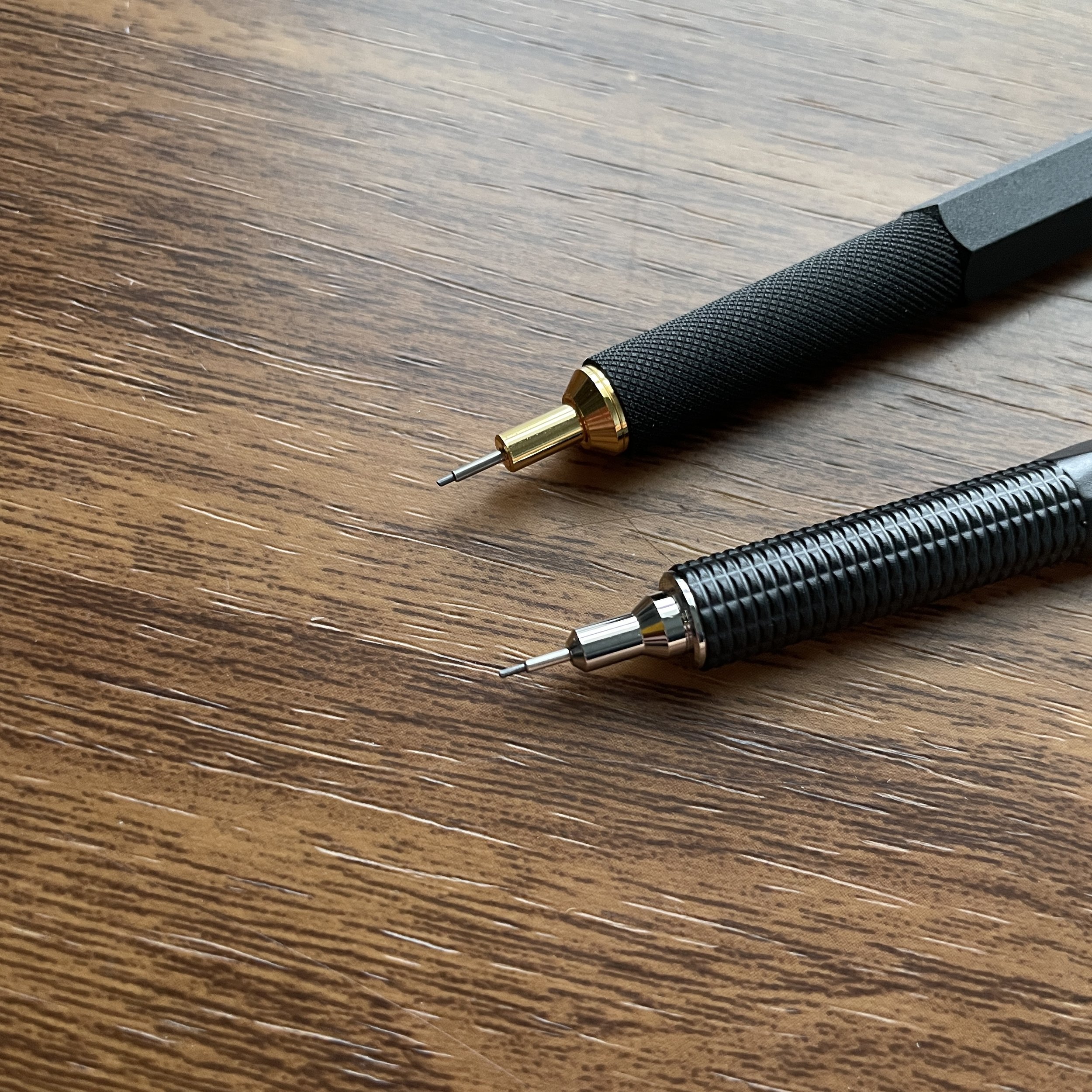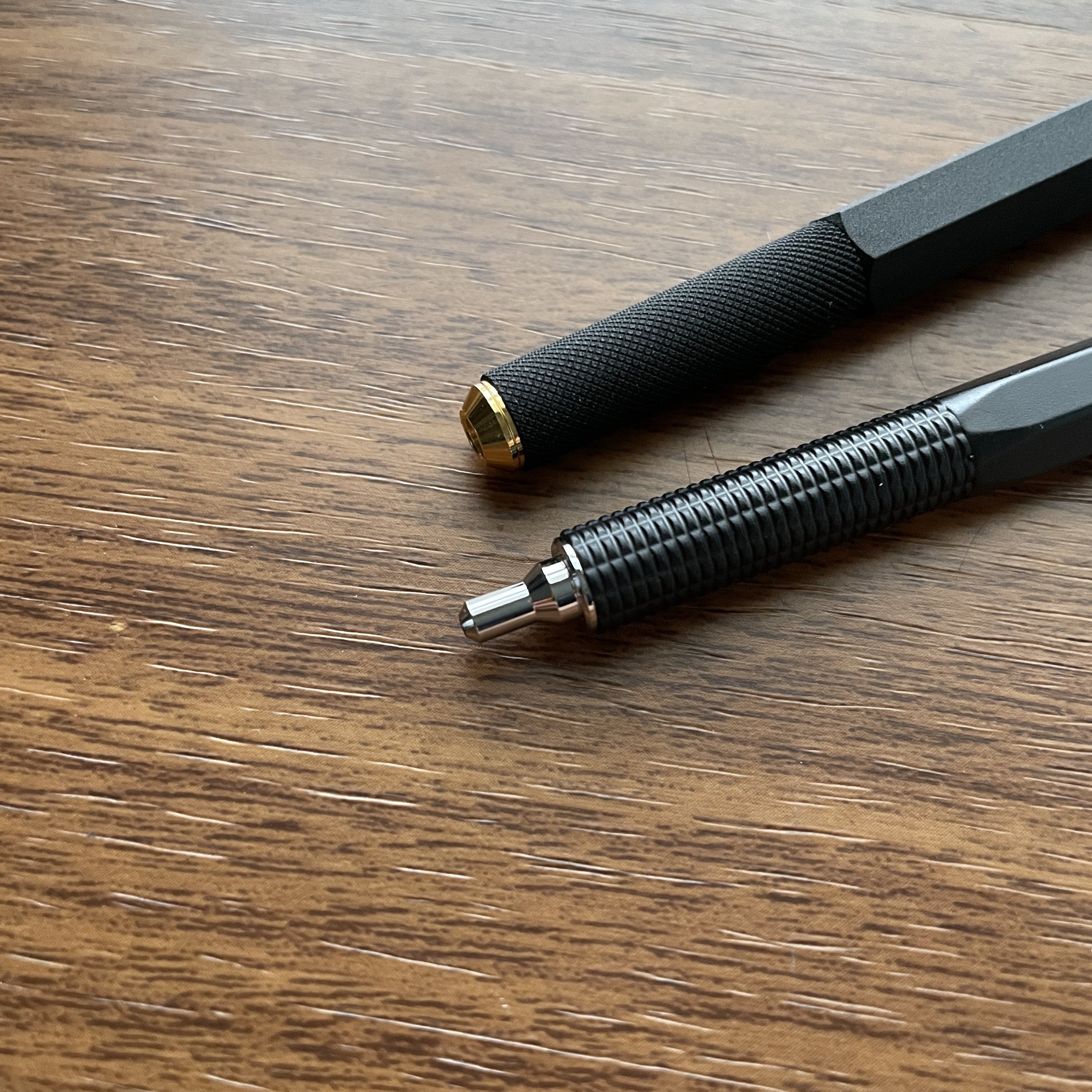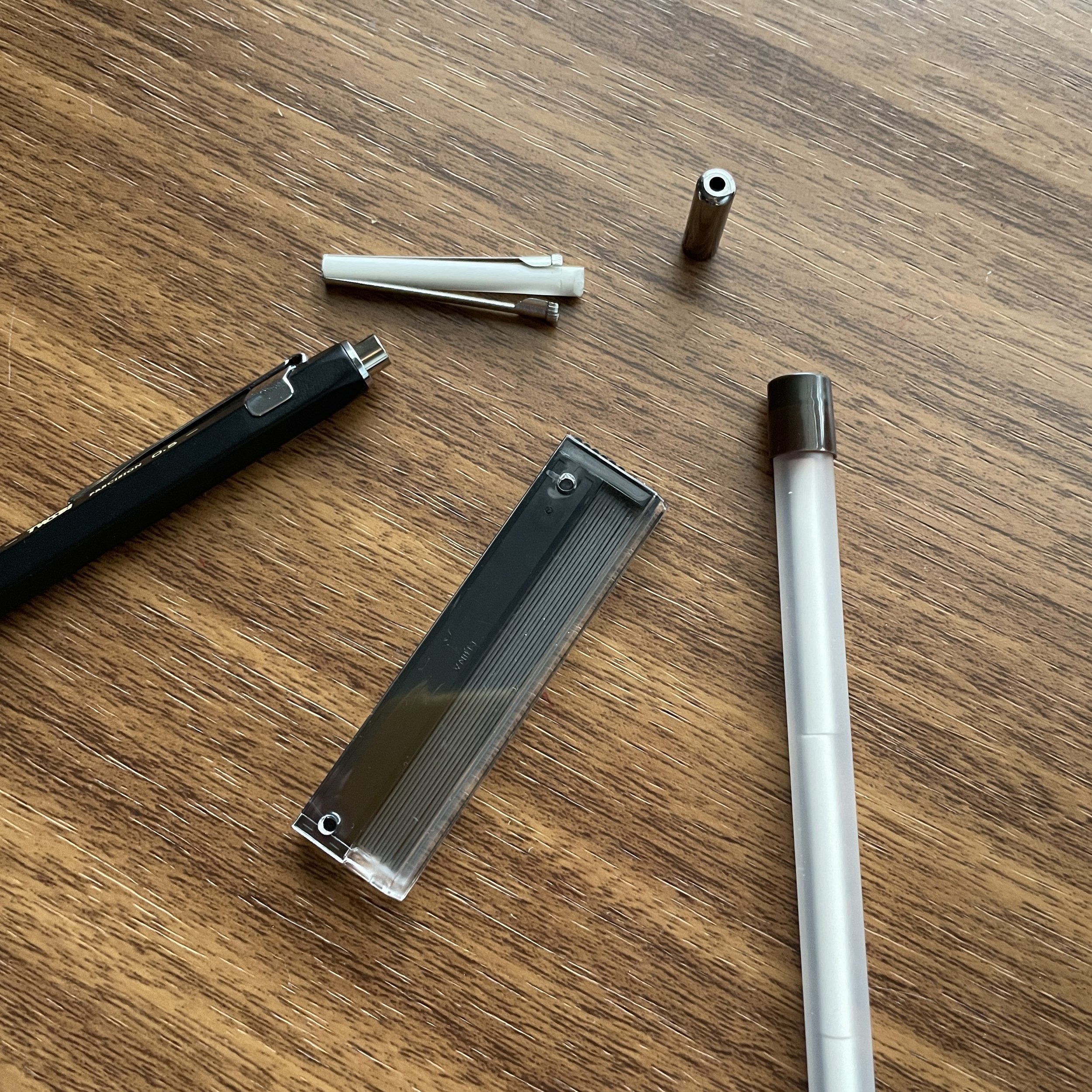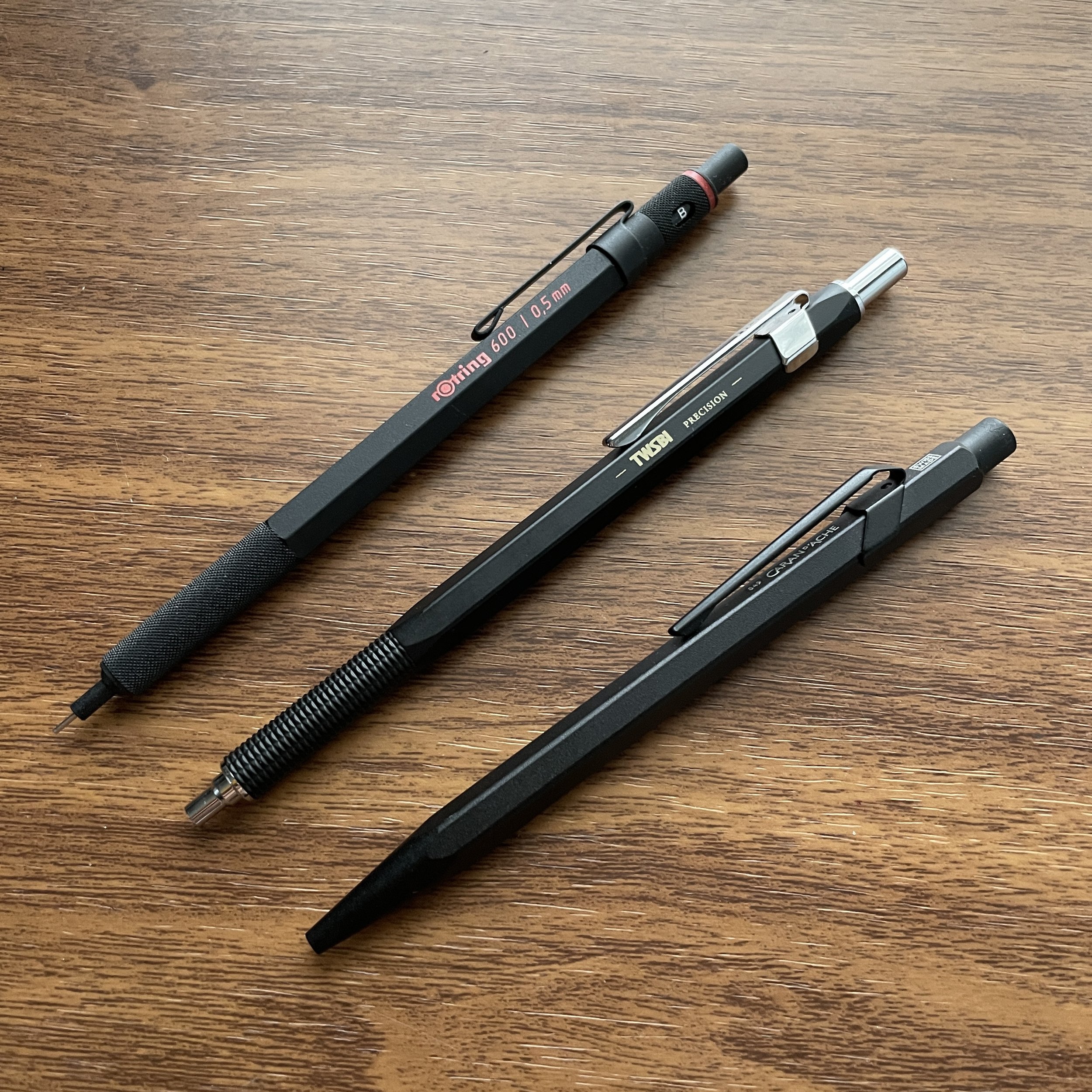So-called “drafting” pens and pencils are sometimes considered a category unto themselves, or as a subset of the slightly broader “technical” pen and pencil category. Long-dominated by the beloved (and excellent) Rotring 600 and 800, many companies have shied away from introducing their own version of this classic piece of stationery kit, despite it’s enduring popularity. Not TWSBI, who over the years has introduced four different mechanical pencils, two ballpoint pens, and a technical-style fountain pen through their “Precision” line of products. Today I’ll take a look at the Precision mechanical pencil and ballpoint.
The Precision Mechanical Pencil comes in both fixed and retractable-pipe versions.
So What Distinguishes the TWSBI Precision Line of Pens?
If you (like me) already own multiple Rotring 600 and Rotring 800 pens and mechanical pencils, what differentiates the TWSBI Precision to the point that you might want to give this particular pen and/or pencil a shot? Here are my main points to consider:
Different Knurling on the Grip. The primary difference I would highlight is the knurling (or grip texture), because this aspect will likely affect your everyday writing the most. Rotring uses a rougher, almost sandpaper-like texture that people either love or dislike depending on whether it hurts their fingers. Personally, I’m a big fan of the Rotring grip, which I think gives the pen a tactile writing experience that’s not duplicated elsewhere, but I also enjoy TWSBI’s approach. The Precision grip appears to be molded into the barrel as opposed to machined, so the knurling is slightly more raised and can have a softer feel. It all comes down to personal preference.
Slightly Softer Edges on the Hexagonal Barrel. I’ve never noticed it until this direct comparison, but the edges on the Rotring pens are pretty sharp. The TWSBI Precision is more rounded, akin to the Caran d’Ache 849, though I would place the Precision “in the middle” between the other two.
Different Aesthetics. Rotring famously adheres to a black/silver + red color scheme, and though they’ve moved away from that in recent years with a few new base colors, the overall aesthetic remains consistent. I would characterize the finish on the TWSBI Precision as more “satin” as opposed to Rotring’s true “matte”, and the TWSBI’s chrome clip, knock, and tip look nice on either the black or silver pen/pencil.
Different Mechanism on the Retractable Pipe Mechanical Pencil. I previously reviewed the Rotring 800, and I love how that pen features a twist mechanism on the knock that allows you to retract the sleeve / “pipe” for pocket carry. The TWSBI Precision has a similar feature, though you need to depress the knock and press down gently to get the pipe to retract. It’s less convenient, but it’s also a less expensive pencil.
The knurling on the TWSBI Precision (top) and the Rotring 600 (bottom) is very different. One is not better than the other - they just have a completely different feel. Note that the tip on the TWSBI Precision ballpoint extends slightly farther than on the Rotring 600. Personally, I like this because I enjoy more needle-tip pens that feel as though they provide more control over my writing. Others prefer how the Rotring looks.
See the gallery below for a comparison between the Rotring 800 retractable mechanical pencil and the TWSBI precision mechanical pencil, both retracted (right) and extended (left).
General Functionality and Writing Experience
Overall, the Precision provides a very nice writing experience for the price point. The Precision pens and pencils are approximately the same weight and length as the Rotring 600, and slightly shorter/slimmer than the Rotring 800. Due to the different texture, the feel in the hand is more akin to the Caran d’Ache 849, and those who appreciate the 849 line of writing instruments but find themselves wanting a more textured grip section and slightly longer barrel should consider the TWSBI Precision.
While the pens discussed here all share certain design elements, they have their own unique feel in hand and will appeal to different users in terms of both aesthetics and functionality.
Though not a game changer, I wanted to point out that TWSBI adds value by including a pack of leads and replacement erasers with the Precision mechanical pencil, and a second Parker-style ballpoint cartridge with the ballpoint pen. The erasers are a cool touch - they’re super long, do their job well, and should last you for a while. The TWSBI-branded ballpoint refill is quite nice, but if you prefer something else it’s Parker-style so you can swap in your choice of the endless Parker-style ballpoint/gel/capless roller refills out there.
I love the long eraser on the TWSBI Precision. Plus you get three of them, likely enough to last you years unless you really enjoy your mechanical pencil erasers.
Takeaways and Where to Buy
To be perfectly honest, now that I’ve been using my own Precision ballpoint and Precision .5mm retractable mechanical pencil for a couple of months now, I’m kicking myself for having waited this long. In my opinion, TWSBI doesn’t do a great job of promoting their non-fountain pen product line, and even though many people have commented about how nice their mechanical pencils are, it’s one of those products that I put off trying and reviewing for years. I’m now wondering whether it’s time to pick up a Precision fountain pen.
Three different pens/pencils, three great options: the Rotring 600 (top), the TWSBI Precision (center), and the Caran d’Ache 849.
We recently added the TWSBI Precision line to the T.G.S. Curated Shop, and currently stock both the Precision Ballpoint and Precision Mechanical Pencil in all colors and subtypes. As noted above, the mechanical pencil is available with both .5mm and .7mm lead sizes, with a fixed or retractable pipe. Both Precision Ballpoint Pens and Mechanical Pencils are priced at $25, which I personally consider a very fair value.
Disclaimer: The T.G.S. Curated Shop is an authorized retailer of TWSBI products, including the Precision pens featured in this review. This post does not contain third-party advertising and affiliate links, and we are supported entirely by shop purchases and pledges via the T.G.S. Patreon Program.



